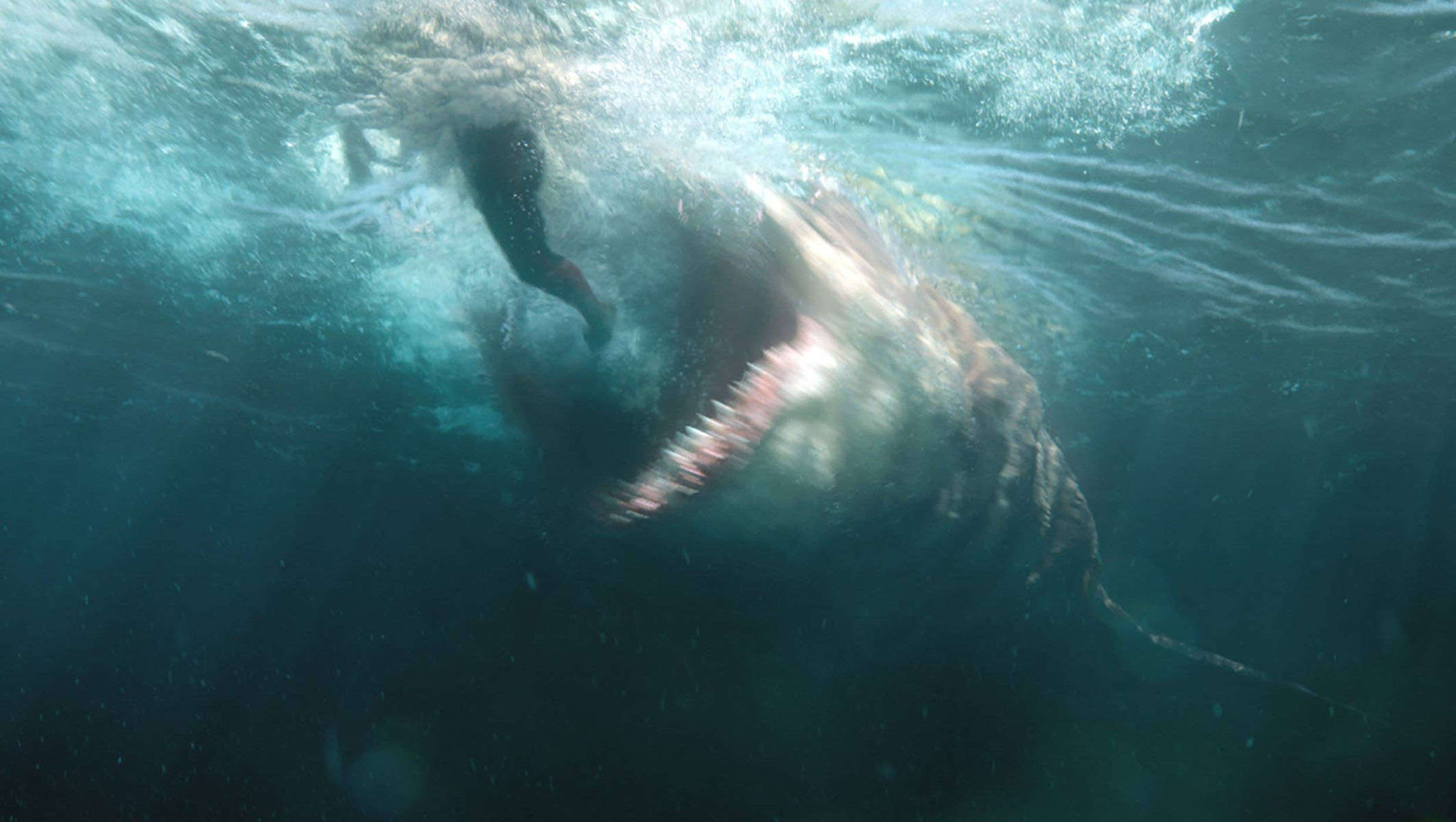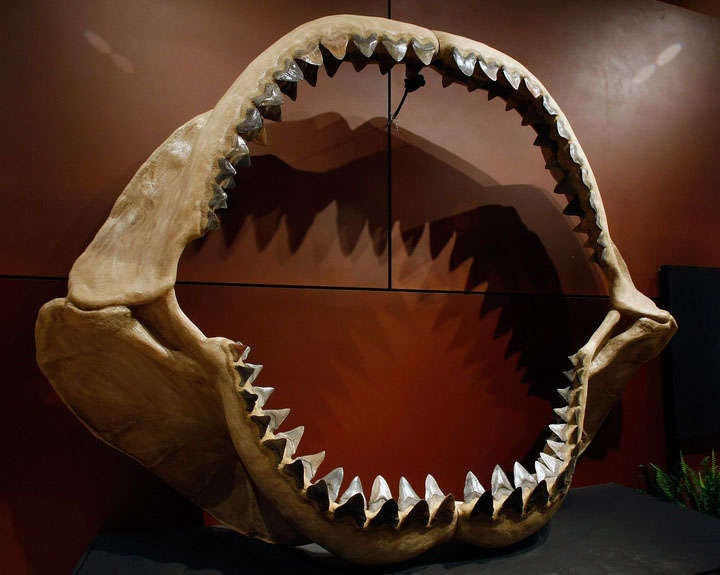Create a free profile to get unlimited access to exclusive videos, sweepstakes, and more!
Baby Megalodons were so mean they ate their own siblings in the womb

Did you ever really think about why there is only one baby shark in that viral Baby Shark video? The reason could be something that is definitely not appropriate for a kids’ cartoon.
Megalodon babies were monsters even before they were born. Sharks are cartilaginous, which is why there is so little known about the extinct species rumored to be so huge it was the star of its own movie. Only its fossilized razor teeth keep washing up everywhere. Now, new research on some rare calcified vertebrae has shown that Megs were cannibalizing their own siblings before they were out of the womb. Such a gruesome head start is probably the reason that they were already about six feet long when they were born into predator-infested Miocene seas.
“The oophagy-based reproductive strategy in the shark order Lamniformes is thought to have already evolved by the Cretaceous period," biologist Kenshu Shimada, who led a study of 20-million-year-old Megalodon vertebrae that was recently published in Historical Biology, told SYFY WIRE.
From the ancient Otodus Megalodon to the Great White (which has also starred in quite a few horror flicks), lamniform sharks are known for their young eating each other in the womb and emerging as not-so-mini terrors.
Brutal sibling rivalry is a survival tactic that gave baby Megs a fighting chance in an ocean full of hungry things. Lamniform sharks give birth to live young that must first hatch from eggs inside the body — if they make it. Oophagy is a type of cannibalism in which embryos that hatch inside the mother devour unhatched eggs to get a growth boost. Feeding on potential siblings and the fatty, nutrient-rich uterine lining gives many extant baby sharks their size, and was thought to have made a newborn Megalodon larger than the average adult human. Never mind they could have probably taken on a human from the moment they were born.
"Nourishing embryos that grew to large sizes becuase of oophagy must be energetically costly for lamniform mothers, likely including Megalodon, but the cost is thought to be offset by the benefits of newborns having an advantage of being 'already-large' predators with a reduced risk of being eaten by other predators," Shimada said.
Unborn sharks cannibalizing their unborn siblings is a reproductive strategy thought to have evolved sometimes during the Late Cretaceous. Sharks like Megalodon would end up producing a few large offspring instead of many small ones that would be prone to getting snapped up by some other set of jaws.
"Body size does generally affect the types of food an animal can eat," said Shimada. "Understanding the growth pattern of such large carnivores, including Megalodon is essential to decipher the ecological dynamics at any given geologic time frame if we want to understand how our present ecological conditions have evolved to be. Such geologic information would also offer insight into how an ecosystem may change in the future if certain carnivores become dominant or become extinct."
The vertebrae that Shimada and his team studied also revealed the likely age and size of the Megalodon that left them behind. If the vertebrae of elasmobranchs (sharks and rays) are calcified well enough, they can show the growth pattern of the creature they belonged to. Cartilage usually disintegrates after death. However, there are some cases in which this cartilage can be fossilized as it is gradually hardened by calcium carbonate deposits or other calcium compounds that will not dissolve and keep the piece of cartilage intact.
"The maximum total length estimations for Megalodon have traditionally relied on teeth, typically using the relationship between tooth sizes and total lengths in the modern great whites shark as a model organism," Shimada said.
From these calcified vertebrae, it was possible to tell that the Meg in question was at least 46 years old when it died, since its most well-preserved vertebrae had that many growth bands, if you don’t count the initial one that formed before birth. These bands suggested a birth size of around six feet, and the potential to grow to an immense 50 feet or more if the shark lived out its estimated lifespan of 88 to 100 years, but prehistoric seas were rough.
Few Megs are thought to have reached that age or size — but their teeth (above) have given scientists an idea of how much they grew on average, which still made them pretty enormous. From this study, Shimada was able to conclude that they grew about 6.3 inches per year.
"The examined specimen is considered to represent a 'middle-age' individual for the fossil species," he said. "So, while the new study has given us a pretty good idea about the growth pattern between birth and middle-age for Megalodon, the exact growth pattern past 46 years old remains rather theoretical and needs further investigation."
Next time someone decides to film some shark nightmare fuel, all they really need to do is film what goes on inside a pregnant shark. That alone should get an R rating.



























